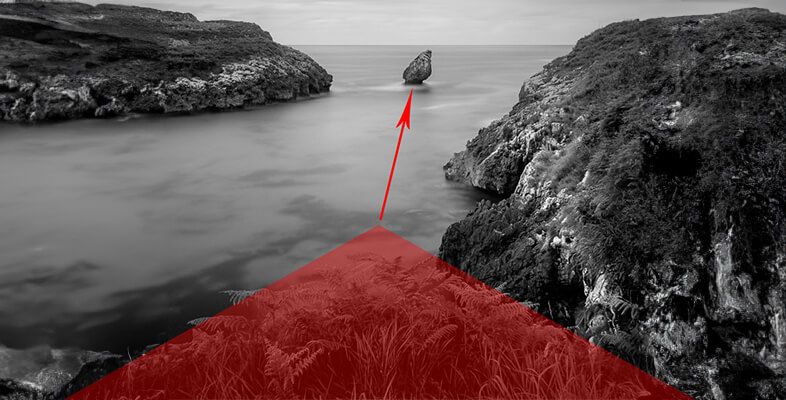Symmetrical & Asymmetrical Balance
Balance in photography is a crucial element of composition that helps create visual stability and harmony within an image. It involves arranging elements so that no single part of the image overpowers the rest. Understanding the concepts of symmetrical and asymmetrical balance can significantly enhance your ability to create compelling photographs. This article explores the different types of balance in photography, focusing on symmetrical and asymmetrical balance, and provides practical tips for achieving these effects.
Balance in Photography
Balance in photography refers to the distribution of visual weight within an image. It is an essential aspect of composition that influences how a viewer's eye moves through a photograph. There are three main types of balance in photography:
Symmetrical Balance: Also known as formal balance, where elements are evenly distributed on either side of a central axis.
Asymmetrical Balance: Also known as informal balance, where elements are distributed unevenly but still create a sense of balance.
Radial Balance: Where elements radiate from a central point, creating a circular composition.
What is Symmetrical Balance in Photography?
Symmetrical balance is achieved when elements on either side of a central axis are mirror images of each other. This type of balance creates a sense of order, stability, and harmony, making the image feel balanced and aesthetically pleasing.
Characteristics of Symmetrical Balance
Mirror Image: Elements on the left and right (or top and bottom) are identical or very similar.
Formal and Structured: Often used in architectural photography, landscapes, and portraits to convey a sense of formality and elegance.
Static Composition: Symmetrical balance tends to create a static, calm feeling in an image, as the viewer’s eye is naturally drawn to the center.

Examples of Symmetrical Balance
Architecture: Buildings and structures often use symmetrical balance to emphasize grandeur and stability. For example, the front façade of a cathedral or a symmetrical garden design.
Nature: Reflections in water often create natural symmetrical balance, where the reflection mirrors the actual scene.
Portraits: Centered portraits with equal space on either side of the subject.
What is Asymmetry in Photography?
Asymmetry, or asymmetrical balance, involves arranging elements of different sizes, shapes, or colors in a way that creates a sense of balance despite the lack of symmetry. This type of balance is dynamic and often more interesting than symmetrical balance because it challenges the viewer’s perception.
Characteristics of Asymmetrical Balance
Uneven Distribution: Elements are not mirrored but are arranged to balance each other visually.
Dynamic and Informal: Creates a sense of movement and can make an image feel more dynamic and engaging.
Visual Interest: Asymmetrical balance often uses contrasting elements to draw the viewer’s eye through the image.
Examples of Asymmetrical Balance
Landscapes: Placing a large tree on one side of the frame balanced by a group of smaller trees or a mountain on the opposite side.
Street Photography: Capturing people or objects of varying sizes and positions within the frame.
Product Photography: Using a larger product on one side of the frame balanced by negative space or smaller items on the other side.

Asymmetrical Balance and the Rule of Thirds
The rule of thirds is a composition technique that divides an image into nine equal parts using two horizontal and two vertical lines. Placing important elements along these lines or at their intersections helps create a balanced and engaging composition.
Applying the Rule of Thirds
Positioning Subjects: Place the main subject off-center along one of the vertical lines, with secondary elements on the opposite side to balance the image.
Horizon Lines: Position the horizon along one of the horizontal lines to create balance between the sky and the ground.
Color Balance
Color balance involves using contrasting or complementary colors to create visual harmony. For example, a bright red object can be balanced by a larger area of a more muted color, like green or blue.
Tonal Balance
Tonal balance refers to the distribution of light and dark areas within an image. A bright subject can be balanced by darker elements, creating a sense of depth and interest.
Radial Balance in Photography
Radial balance is achieved when elements radiate from a central point, creating a circular composition. This type of balance draws the viewer's eye inward towards the center of the image.
Examples of Radial Balance
Nature: Flowers, spider webs, and sunbursts often exhibit radial balance naturally.
Architecture: Spiral staircases or round buildings with symmetrical designs radiating from a central point.
Conclusion
Understanding and applying the principles of symmetrical and asymmetrical balance can greatly enhance your photographic compositions. Symmetrical balance provides a sense of order and stability, while asymmetrical balance introduces dynamism and visual interest. By mastering these concepts and experimenting with the rule of thirds, color balance, tonal balance, and radial balance, you can create more engaging and visually appealing photographs. Balance is a key element of composition that can transform your images and captivate your audience.

Or Get YourMoney Back
back your money in the rare case you are not satisfied with the quality of your
damage-free pictures. Only $38 for most image restorations regardless of damage

All rights reserved.